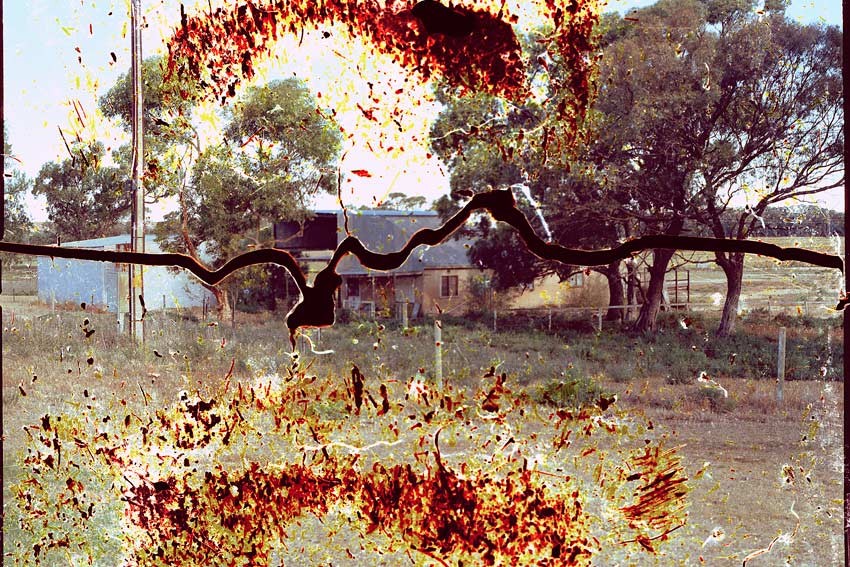Penumbral Tales: The shadows of society

Penumbral Tales, showing at Flinders University City Gallery for this year’s South Australian Living Artist’s Festival, celebrates the work of nine South Australian contemporary photographers who depict stories of the fringe dwellers, the people on the periphery of society. The term penumbral refers to the moon’s shadow, in this case the shadows of society.
Penumbral Tales, showing at Flinders University City Gallery for this year’s South Australian Living Artist’s Festival, celebrates the work of nine South Australian contemporary photographers who depict stories of the fringe dwellers, the people on the periphery of society. The term penumbral refers to the moon’s shadow, in this case the shadows of society. Curator Mark Kimber: “I approached the City Gallery about the idea of putting together a photographic exhibition of the past and the present and perhaps a little bit of the future. It is very much based on the idea of the outsider, the fringe dweller, the people who maybe don’t figure in the day-to-day lives we see.” Alongside the contemporary artists are photographs sourced from the State Library of South Australia’s collection (Kimber’s first job out of art school was working in the photographic department) as well as works from the Flinders University Art Museum collection. “There is a rich variety of work which is unified in that it’s photography but it’s also a part of society that we perhaps don’t see that often. They are portraits of a landscape but they are a little bit strange, a little bit dark.” Looking through the archives it struck Kimber that there was a parallel between the invention of photography (1839) and the development of the state of South Australia (1834). “When you go through the collection you see the different forms of daguerreotype to tintype and all these different ways of working as the state is growing at the same time. There is a very interesting parallel,” he says. Kimber also noticed a strangeness almost Twilight Zone-like, David Lynch, other world that was happening in South Australia in the 19th and 20th centuries that wasn’t often portrayed in the mainstream media and thus not something we are familiar with. “I looked for images that had that idea of Adelaide but perhaps not how you had imagined it,” he says. For example, the 1920s photograph of a woman in riding crops smoking a cigarette. The image encapsulates a time when women began stepping out of the more traditional roles and having a stronger place in society. The artists have bounced off the archival work creating a dialogue between the past and the present. Kimber’s own work, which features in the exhibition, explores the idea of anonymity that comes with wearing a mask. His photographs are of individuals adorning masks made out of the faces of famous photographs. “I have shaped them and made them into full masks that people wear as if they are on their way to some sort of pagan event,” he says. Other artists deal with photography in a more sculptural way. Odette England, for example, took photographs of her parents’ farm near Murray Bridge and then had her parents tape them to the soles of their feet and walk around the farm. The result is images of the farm but with a wear and pattern through them. They are almost abstract in a way. James Tylor presents a series of daguerreotypes that focus on the conflict between early white settlers and Indigenous people. The landscape images have been pierced with bullet holes and represent the colonisation of Victoria and the frontier conflict that took place between the first Europeans and the Gunditjmara – the local Aboriginal people of the Portland Bay area. The exhibition aims to show South Australia, and photography, in a different light. Kimber: “What I am always trying to do is broaden, as much as I can, anyone’s concept of what photography is or could be. What we are trying to foster in this exhibition is having that chorus of voices, showing that there is no particular one way of approaching anything.” Penumbral Tales Flinders University City Gallery Saturday, July 18 to Sunday, September 20 flinders.edu.au/artmuseum Images 1. Odette England, Dad #4 (Left Foot) (detail) from the series Thrice Upon A Time, 2012, archival pigment print from damaged negative, edition 3/3, 69.3 x 91.4cm, courtesy the artist and KLOMPCHING GALLERY, New York 2. James Tylor, Whalers, Sealers and Landstealers (The Whalers House), 2014, becquerel daguerreotype with 140 and 12 guage shotgun holes, 11 x 14cm, courtesy the artist, Vivien Anderson, Melbourne and Greenaway Art Gallery, Adelaide